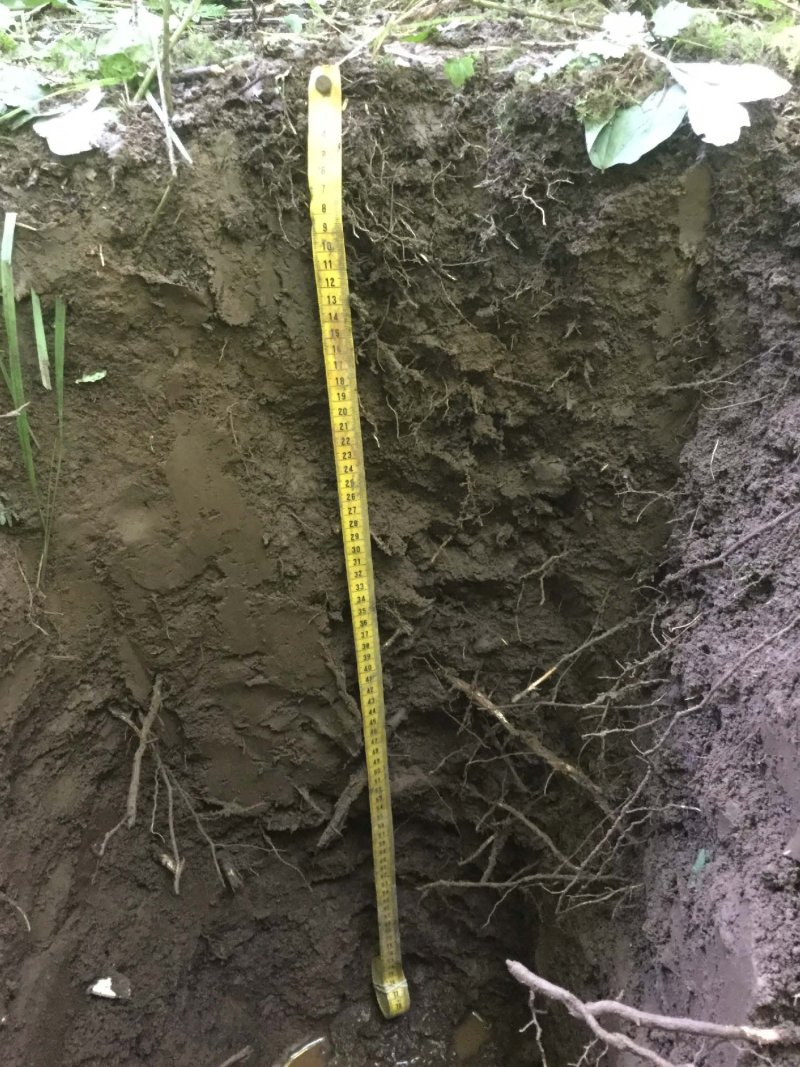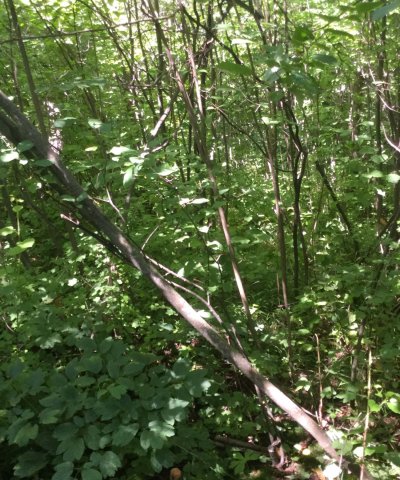
Natural Resources
Conservation Service
Ecological site F090AY004WI
Loamy Floodplain
Last updated: 10/02/2023
Accessed: 12/21/2025
General information
Provisional. A provisional ecological site description has undergone quality control and quality assurance review. It contains a working state and transition model and enough information to identify the ecological site.
MLRA notes
Major Land Resource Area (MLRA): 090A–Wisconsin and Minnesota Thin Loess and Till
MLRA 90A is part of the recently glaciated till and outwash plains of central Minnesota and northern Wisconsin. The area was covered with loamy alluvium or loess after glaciation. It is in Wisconsin (56 percent), Minnesota (40 percent), and Michigan (4 percent). It makes up about 21,967 square miles (56,901 square kilometers).
This MLRA has distinct boundaries to the north where it borders tills of a dissimilar origin on the less morainic landscapes of MLRAs 88, 92, and 93A. The boundary to the west is where the MLRA transitions to the calcareous tills of the Des Moines Lobe, in MLRA 57. To the south, MLRA 90A borders MLRA 90B, which has older soils and better-defined drainage patterns, and MLRA 91, which has the distinct lower landscape relief of an outwash channel.
The part of this area in Minnesota is mostly in the Western Lake section of the Central Lowland province of the Interior Plains. Nearly all the parts in Wisconsin and Michigan are in the Superior Upland province of the Laurentian Upland. Four distinct lobes of the Laurentide Ice Sheet (Rainy, Superior, Chippewa, and Green Bay) played major roles in shaping the landscape in this area. The landscape is characterized by gently undulating to rolling, loess-mantled till plains, drumlin fields, and end moraines mixed with outwash plains associated with major glacial drainageways, swamps, bogs, and fens. In some areas lake plains and ice-walled lakes are significant. Steeper areas occur mostly as valley side slopes along flood plains and as escarpments along the margins of lakes.
Lakes, ponds, and marshes are common throughout the area, and streams generally have a dendritic pattern. The major rivers in this area are the Chippewa, St. Croix, Mississippi, and Wisconsin Rivers. Elevation ranges from 1,100 to 1,950 feet (335 to 595 meters). Local relief is mainly less than 10 feet to 20 feet (3 to 6 meters), but some major valleys and hills are 200 feet (60 meters) above the adjacent lowland.
Precambrian-age bedrock underlies most of the glacial deposits in this MLRA. The bedrock is a complex of folded and faulted igneous and metamorphic rocks. The bedrock terrain has been modified by glaciation and is covered in most areas by Pleistocene deposits and windblown silts. The glacial deposits form an almost continuous cover in most areas. The drift is several hundred feet thick in many areas. Loess covered the area shortly after the glacial ice melted.
Ground water is abundant in deep glacial deposits in most of this area. It also occurs in sedimentary and volcanic rock in the western part of the area. It is scarce where the layer of drift is thin. The water meets the domestic, agricultural, municipal, industrial, rural, and irrigation needs of the area. The content of dissolved solids in the ground water from all the various aquifers in this area is low, and the water generally is moderately hard or hard. The level of total dissolved solids in some of the water can be much higher because of a high content of limestone in some of the glacial deposits. Most of this area obtains ground water from unconsolidated glacial sand and gravel deposits on or very near the surface. Some wells tap the Cambrian sandstone in the southwestern part of the area, in Wisconsin.
In northwest Wisconsin (Ashland and Bayfield Counties) where there are no glacial deposits and in much of the part of this area in Minnesota, ground water from sedimentary and volcanic rock aquifers is used. This water is of very good quality; however, many soils have very porous layers that are poor filters of domestic waste and agricultural chemicals, so there is a risk of contamination from development and agriculture. Minor water concerns are hardness and, in some areas, high concentrations of iron. Yields of water from the glacial deposits vary.
The dominant soil orders are Alfisols, Entisols, Histosols, and Spodosols. The soils in the area have a frigid temperature regime, a udic or aquic moisture regime, and mixed mineralogy.
This area has a significant acreage of public and private forestland used to support the paper and lumber industry Sap collection from sugar maple and syrup production are important forestry enterprises. Agricultural enterprises include row crops, dairy farms, and beef operations. Crops include corn, soybeans, oats, wheat, and alfalfa. Tourism, recreation, and wildlife management are important. Hunting, fishing, snowmobiling, hiking, and skiing are popular activities because of the area’s abundance of water, the many acres of national and county forests, and public hunting grounds. (United States Department of Agriculture, Natural Resources Conservation Service, 2022)
Classification relationships
Major Land Resource Area (MLRA 90A): Wisconsin and Minnesota Thin Loess and Till
USFS Subregions: Central-Northwest Wisconsin Loess Plains (212Xd), Glidden Loamy Drift Plain (212Xa), Lincoln Formation Till Plain - Mixed Hardwoods (212Qb), Lincoln Formation Till Plain - Hemlock Hardwoods (212Qc), Brule and Paint Rivers Drumlinized Ground Moraine (212Xc), Perkinstown End Moraine (212Xe), Rib Mountain Rolling Ridges (212Qd), Rosemont Baldwin Plains and Moraines (222Md)
Small sections occur in Hayward Stagnation Moraines (212Xf), St. Croix Moraine (212Qa), Mille Lacs Uplands (212Kb), Green Bay Lobe Stagnation Moraine (212Ta)
Wisconsin DNR Ecological Landscapes: Western Prairie, Forest Transition, and North Central Forest
Ecological site concept
The Loamy Floodplain ecological site is found scattered throughout MLRA 90A in floodplains along streams and rivers that dissect expansive till plains and outwash plains. These sites are characterized by very deep, very poorly to moderately well drained soils that formed in loamy alluvium and lacustrine deposits. Sites are subject to frequent flooding in the spring and fall, and some sites are subject to frequent ponding. Some sites remain saturated for long durations and meet hydric soil requirements. Stream inflow, precipitation, runoff from adjacent uplands, and groundwater discharge are the primary sources of water. Soils range from very strongly acid to moderately alkaline.
The characteristic traits of Loamy Floodplain are their loamy textures and their location on a floodplain. The loamy textures, presence of carbonates, and higher pH and available water capacity differentiate these sites from their Sandy Floodplain counterparts.
Similar sites
| F090AY003WI |
Sandy Floodplain Sandy Floodplain site are found exclusively on floodplains in sandy and sometimes silty alluvium. These sites are somewhat poorly to poorly drained and are subject to flooding. Some sites may be saturated for long enough for hydric conditions to occur. They are found in similar landscape positions as Sandy Floodplains but have coarser textures. |
|---|---|
| F090AY006WI |
Wet Loamy Lowland Wet Loamy Lowland consist primarily of deep loamy deposits derived from a mixture of outwash, alluvium, loess, and lacustrine sources. Some sites may have bedrock contact within two meters of the surface. These sites are seasonally ponded depressions that remain saturated for sustained periods, allowing hydric conditions to occur. |
| F090AY008WI |
Moist Sandy Bedrock Upland Moist Sandy Bedrock Upland sites consist of sandy to clayey alluvium, till, or eolian deposits over residuum weathered from bedrock. Bedrock contact occurs within two meters of the surface. Sites have seasonally high water table within a meter of the surface. Perching of the water table may occur as a result of bedrock contact. Vegetative communities supported by Loamy Floodplains are also supported by Somewhat Poorly Drained Over Bedrock sites. |
| F090AY009WI |
Moist Sandy Lowland Moist Sandy Lowland consist of deep sandy and loamy deposits derived from a mixture of alluvium, residuum, till, or lacustrine sources. The finer textures allow the soil to stay moist - but not saturated - for sustained periods during the growing season. Some vegetative communities supported by Loamy Floodplains are also supported by Somewhat Poorly Drained Loams. |
Table 1. Dominant plant species
| Tree |
(1) Quercus alba |
|---|---|
| Shrub |
Not specified |
| Herbaceous |
(1) Onoclea |
Click on box and path labels to scroll to the respective text.
Ecosystem states
State 1 submodel, plant communities
| 1.1B | - | Major flooding event depositing new sediment. |
|---|---|---|
| 1.2B | - | Long period without major flooding. |


